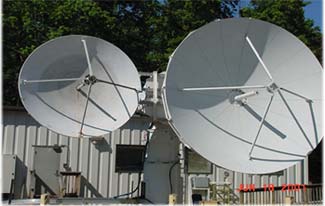 (As a precaution, a small rack of hard drives called the ACOP will store the data right on ISS. Every once in a while, the crew will bring back these hard drives for us.) The data that comes to the ground is buffered briefly at Marshall Space Flight Center in Alabama; from there it is transmitted to the AMS Science Operations Center (SOC) for permanent storage and analysis.
(As a precaution, a small rack of hard drives called the ACOP will store the data right on ISS. Every once in a while, the crew will bring back these hard drives for us.) The data that comes to the ground is buffered briefly at Marshall Space Flight Center in Alabama; from there it is transmitted to the AMS Science Operations Center (SOC) for permanent storage and analysis.
The Science Operations Center requires tremendous computer resources; in particular, it needs to be able to store about a petabyte (1000 terabytes, 1,000,000 gigabytes) of data. Processing the data, and simulating the detector, is done both at the SOC and at universities and laboratories around the world.
Meanwhile, information about AMS's health is transmitted to a control center at CERN, called the Payload Operations Center (POC). The POC will be able to send commands to AMS (with NASA's approval): we can open valves, adjust voltages, upload new software, and so on.